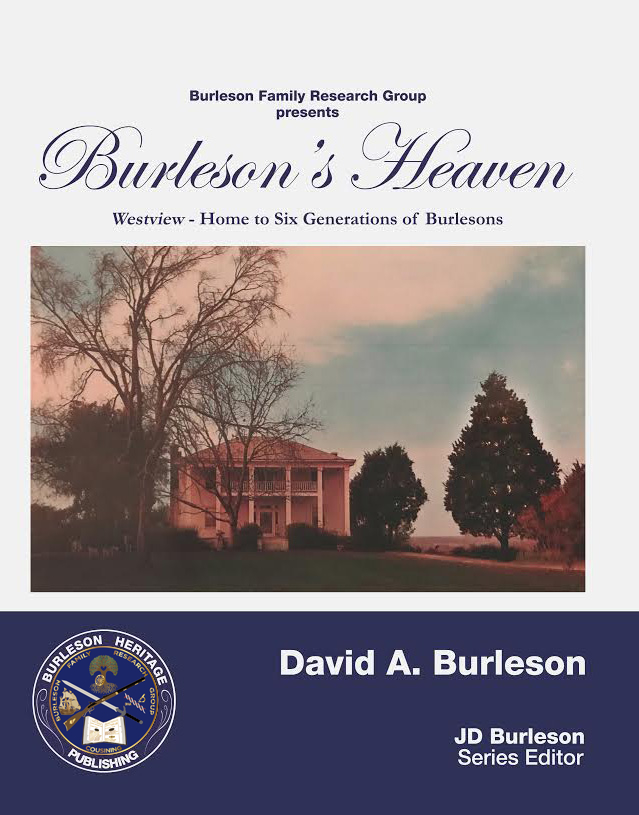Burleson’s Heaven
Westview — Home to Six Generations of Burlesons,
by David A.Burleson

Westview a southern plantation home, was built by a Burleson and has been owned by a Burleson since 1841 when Alabama was a young state. It was built in a perfect location for farming along Flint Creek, near railroads, and on rich fertile land. The house was large — five stories tall — with a commanding view of the fields below from atop Burleson Mountain. The location, when this land was first seen by the Burleson who would someday own it, was in Indian Territory and white men, like Jonathan Burleson, were considered intruders. Despite these adversities, Jonathan knew that someday this land would be where he would build his home.
Jonathan Burleson’s grandfather was Aaron Burleson, a man who many people today refer to as Aaron Burleson “II.” Aaron was a native of New Jersey, and from the 1740s to the 1780s he followed the early frontier migration and settlement of what later became the eastern and southeastern United States. His will was written in 1781 in what was then Sullivan County, North Carolina. It lists thirteen children, one of whom was John Burleson, who was to receive a mare and a “good rifle gun” when he became of “fit” age. John was the first of this line of Burlesons to set foot into what became the state of Alabama.
John and two of his brothers, Joseph and James, and their families arrived in northern Alabama, near present day Huntsville in 1808. Included in the family’s arrival in Alabama was John’s son, eighteen-year-old Jonathan, the builder of Westview. John, James and Joseph settled at a small frontier settlement which had come into existence in 1805 and was comprised of but a few dozen families and tradesmen. This settlement was called Twickenham, and later grew into the town of Huntsville. At that time, this region was part of the Mississippi Territory, with the area south of the Tennessee River and west of Huntsville reserved hunting grounds of the Chickasaw and the Cherokee Indian tribes. White men were forbidden by law to settle in this area. The Indian Treaties of 1805 and 1806 gave ownership of this region exclusively to the Indians. However, the course of Manifest Destiny had already begun. No treaty, no matter how many times it was written in blood or sworn to by government officials could stop the land hungry frontiersmen.
